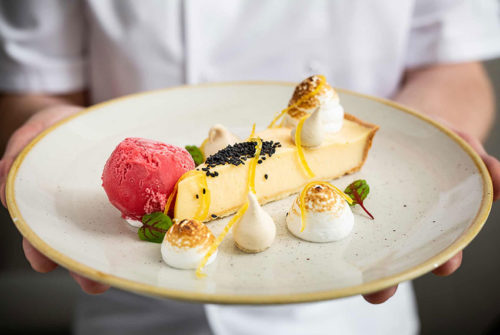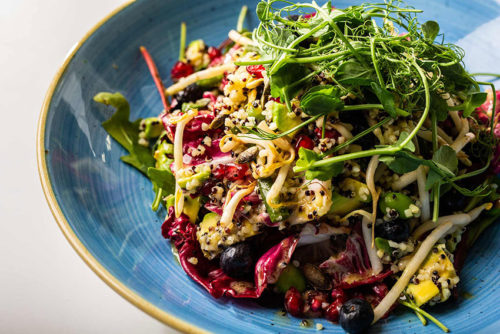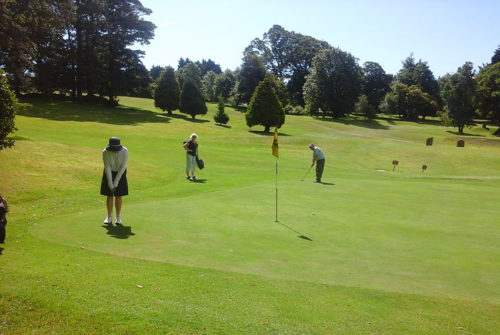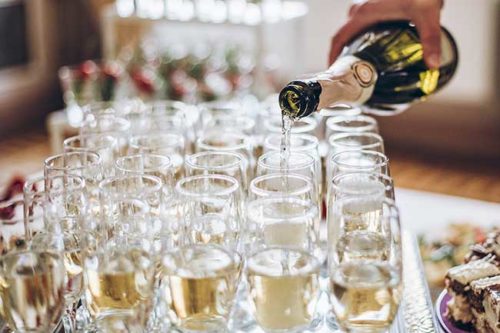News from Budock Vean
Cornwall’s Wonderful Christmas Customs & Winter Traditions
Christmas is such a special time of year! A time when we come together and celebrate, when we give gifts and enjoy spending time with our loved ones, and a time when we think about the year that has passed and what the future might bring.
Each family has their own traditions, the treats that they eat, games that they play or things that they always do together each year but in this article we are going to explore some of Cornwall’s Christmas customs and winter traditions.
Some of these traditions are deeply rooted in the long forgotten past and some are much more recent additions but each adds a little magic, merriment and light to this special season!
Nadelik Lowen!
Tom Bawcock’s Eve, Mousehole
“A merry place, you may believe,
Was Mousehole ‘pon Tom Bawcock’s Eve,
To be there then who wouldn’t wish
To sup of seven sorts of fish!”
Every 23rd December the little fishing community of Mousehole come together and holds a very special kind of celebration. No one is entirely sure when the event began but it is thought that around 200 years ago the village was in the grips of a famine and one man risked his life to save them all.
Tom Bawcock’s Eve commemorates the fisherman who put to sea in a terrible storm and managed to bring home a catch so that the people of Mousehole could eat.
The village, which is also famed for its spectacular Christmas lights, celebrates Tom’s bravery with a beautiful lantern parade around the harbour, followed by much singing in the local pubs and of course, the eating of Stargazey Pie, filled with seven sorts of fish!
Montol, Penzance
On the 21st December the streets of Penzance come to life with the annual Montol celebration. This colourful and alternative mid-winter festival began in 2007 but is considered to be a revival of much older Celtic customs dating back hundreds of years. In the past it was very important to note the turning of the seasons and the arrival of the winter solstice was a particularly significant time for celebration as it marked the return of the sun.
Those attending should expect weird and wonderful, steam-punk-type costumes alongside tradition carol singing, lantern sculptures, music and dancing, maybe even the odd fire-eater! In the lead up to the 21st there is a week-long arts festival, and then on the day the processions start after dark, usually around 4pm. The main noisiest and most colourful procession begins at 6pm, with the dancers and musicians making their merry way around the streets – it really is a feast for the senses.
Weather permitting there are beacons lit around the town and the traditional burning of the Cornish Yule Log (see below) too.
For more information try: Montol Festival – Winter Solstice in Penzance
The Cornish Yule Log
This is another Cornish tradition the origins of which are hard to pin down but it seems to have started as a Nordic tradition dating back to the medieval period and perhaps brought to us by Viking invaders.
There are similar Yule Log celebrations all over Europe, each varying slightly from country to country but usually involving the burning of a large tree trunk or chunk of wood, often saved to burn again year on year, and ceremoniously lit around midwinter. In Cornwall the Yule Log, often known as ‘The Mock’, was traditionally lit using a piece of the previous year’s log and sometimes had the figure of a man carved into it.
The burning of the log was supposed to secure good fortune for the home or community for the coming year and would also ward off evil spirits and deter witchcraft.
Of course these days most households just opt for the edible chocolate Yule log instead!
The Cornish Kissing Bush
This tradition though not well known today is likely to be a forerunner to hanging mistletoe in your home. The Cornish Kissing Bush is thought to have its roots in the winter solstice celebrations of the ancient past when bringing greenery into the home signified the return to new life and the turning of another year.
The Bush represents the rebirth and fruitfulness of the coming year and was said to be made of two wreaths or hoops covered with holly, ivy, mistletoe, furze blossoms and fruit. One hoop would be hung inside the other and there would often be a crown of apples and candles on the top.
The Bush was then hung in a window or doorway and “merriment was to take place beneath wherever it was hung”. It was said that any girl kissed beneath the Kissing Bush would be married within twelve months!
The Bodmin Wassail
The 6th January 2024 will mark the 400th anniversary of this Cornish tradition!
First recorded in 1624 the Bodmin Wassail has to be one Cornwall’s oldest Christmas or New Year traditions. Held on Twelfth Night and similar to carolling, it involves a group of men, clad in full evening dress complete with top hats, walking the streets of Bodmin singing.
These days the singers go from business to business and pub to pub, as well as visiting residential care homes and private houses, all with their wassail bowl collecting money for local charities while they entertain the crowds.
The songs are the most important element of the wassail. Bodmin traditionally has three, which is unique amongst wassail traditions which usually only have one song which is repeated. The first is sung on arrival before the wassailers enter the house. The second is often sung during the eating, drinking and storytelling that goes on at each stop and the third is sung as the wassailers leave to thank the hosts for their hospitality:
“So now we must be gone
to seek for more good cheer,
where bounty will be shown,
as we have found it here,
in our Wassail.”
The origins of wassailing are unknown but the word itself comes from an Anglo-Saxon toast ‘waes hael’, meaning “be in good health”.
In 2024 the event will start in the town centre at 2.20pm when the wassailers will sing for the mayor and local dignitaries before starting their journey around Bodmin.
Cornish Guise Dancing
Throughout the year across Cornwall many local events will feature guise dancers – entertainers dressed in masks and elaborate often weird and wonderful costumes – but traditionally they were seen in West Cornwall around Christmas time, especially the Twelve Days of Christmas.
The term ‘guise’ is literally derived from the word ‘disguise’ as the dancers and musicians use masks to conceal their identities from onlookers. But the tradition is also sometimes known as goose, goosey or geese dancing.
The costumes allow the dancers to behave in a more outlandish way as they entertain the crowds with music, dance, drama, storytelling and games. Often performing in pubs or in the street guise dancers were meant to bring colour and merriment to the darkest days of the year, a task they still fulfil today.
Two of the best places to see guise dancing during the winter are at the Montol celebrations (above) and Mummers Day in Padstow which is held on Boxing Day.
A Festive Sea Swim
Very much a modern day tradition, jumping into the freezing waters around the coast of Cornwall has become the highlight of many families Christmas’.
Festive sea swimming events are held all over Cornwall on Christmas Day, Boxing Day and New Year’s Day with a chilly dip being enjoyed by hundreds each year. Many of those brave enough to take on the challenge don Christmas outfits and tinsel as they dive into the waves.
If you fancy joining in the nearest swim to Budock Vean is at Gyllyngvase Beach in Falmouth at 10am on Christmas Day – Christmas hats are of course entirely voluntary.
Happy Christmas from all of us at Budock Vean!
Nadelik Lowen Owen Hag Oll!







